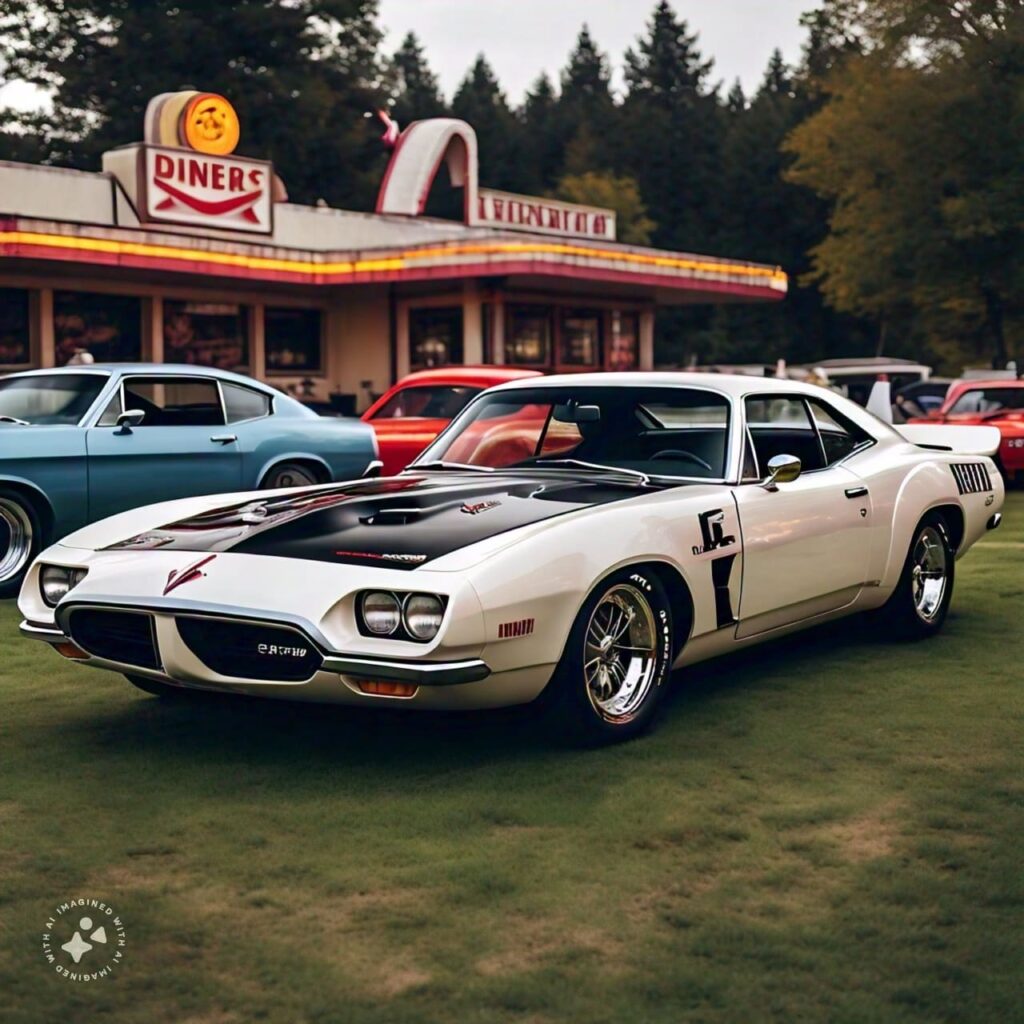Mopar* earned its stripes as a true muscle car trailblazer all the way back in 1955 when it unleashed the game-changing 300-horsepower Hemi V-8 engine onto the scene. Fast forward to the swinging ’60s, and the competition among auto giants to churn out the meanest, fastest rides was fierce. But hold onto your seatbelts because when it comes to Mopar*, the late ’60s and early ’70s were the real showstoppers. Dodge*, Chrysler*, DeSoto*, Imperial*, and Plymouth* joined forces to roll out jaw-dropping muscle cars that screamed “Mopar* or nothing.” Think iconic beasts like the 1968 Charger* from “Bullitt” with Steve McQueen burning rubber, the 1969 Charger* in “Dirty Mary, Crazy Larry,” and the sleek white 1970 Dodge* Challenger* R/T in “Vanishing Point” stealing the spotlight. These bad boys weren’t just eye candy – their engines were the stuff of legends, unleashing raw power with every roar. Ready to dive deep into the heart of these roaring legends? Well, strap in because we’re about to take you on a high-octane journey through the powerhouse Mopar* muscle car engines that ruled the road.

The 276 FirePower Hemi V8 engine, a beast unleashed by Chrysler* in 1951, was something straight out of a car enthusiast’s wildest dreams. Picture this: a hemispherical combustion chamber design, churning out a whopping 180 horsepower. But wait, it wasn’t just Chrysler* showing off – Dodge*, DeSoto*, and Imperial* wanted in on the action too, each putting their unique spin on the legendary Hemi engine. The bore-spacing for these FirePower engines was no joke at 4.5625 inches, most rocking a reliable two-barrel carburetor.
Now, let’s fast forward to 1955 when the Chrysler* C-300 made its grand entrance with not one, but two Carter WCFB four-barrel carburetors. Talk about a showstopper! This bad boy flexed a horsepower rating of 300, a true marvel of engineering for its time. Oh, and hold onto your seat because here’s a fun fact – the FirePower Hemi engine paved the way for the iconic second-generation Hemi, a tale we’ll dive into later.
And that, my friends, is how Chrysler* kicked it up a notch with their FirePower Hemi engines, setting the stage for a legacy that continues to rev up hearts and engines to this day.
In 1958, Chrysler* shook things up by rolling out the 383 B-engine V-8 to take over from the legendary FirePower Hemi engines. The 383 version quickly stole the spotlight, flexing its muscles with a 4.25-inch bore and a 3.375-inch stroke. What set the 383 apart was its ability to unleash power at high rpm, making it a top pick over the heftier but slower-revving 426 Hemi and 440 engines. Fast forward to 1970, the 383 Magnum burst onto the scene boasting an impressive 335 horsepower and a whopping 425 pound-feet of torque. This powerhouse didn’t play favorites when it came to muscle cars, showing up in iconic Mopar* rides like the Dodge* Charger* and the Plymouth* ‘Cuda.
The Chrysler* 413, hailed as the RB raised block engine in the automotive world, made quite the splash during its heyday, holding the title of Mopar*’s most formidable powerhouse for a fleeting moment. Back in 1959, this beastly engine strutted onto the scene with its stout 4.18-inch bore and a 3.75-inch stroke, exuding confidence and power from every angle.
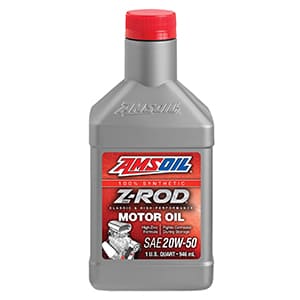
Originally finding its home in Chrysler*’s luxurious rides, the 413 underwent a transformative makeover in 1962, evolving into the exclusive 413 Max Wedge V8 high-performance engine that left enthusiasts drooling. This revamp cranked up the heat, giving the engine a displacement punch of 425 cubic inches. Think solid lifters, dual-valve springs, magnafluxed rods — all decked out with short-ram induction manifolds, aiming to dominate the asphalt jungle.
Dubbed the Max Wedge for a reason, this engineering marvel sported a 11.0:1 compression ratio, churning out a mind-blowing 415 horses and a jaw-dropping 470 lb-ft of torque, leaving the competition eating dust in its wake. This engine wasn’t just a powerhouse; it was a game-changer.
The 426 Max Wedge, a beefed-up version of the RB engine, made its grand entrance in 1963. Picture this bad boy showing off a 4.25-inch bore and flexing with three compression ratios of 11.0:1, 12.0:1, or 12.5:1, depending on how it was set up. Now, let’s talk about the “Stage III” variant of this muscle machine. It came ready to rumble with high-flow cylinder heads, rock-solid casting blocks featuring beefed-up oil feed, a wicked cross-ram intake manifold, not one but two Carter 4-barrel carburetors, and a high-flow, cast-iron exhaust manifold to top it all off. This setup brought the heat with an official rating of 425 horsepower and a whopping 480 lb-ft of torque, earning its stripes as the go-to high-performance engine on the streets until the mighty 426 Hemi came along.
The 426 Hemi V-8 stands as one of the most iconic V8 engines in history, renowned for revolutionizing the muscle car scene and setting a standard that endures today. Born from the fusion of the beefy 426 Max Wedge and the cutting-edge hemispherical-head technology of the Chrysler* FirePower Hemi engines from the ’50s, this powerhouse of an engine flexed its muscle in the 1964 racing circuit. Dominating the track, it swept the top four spots at the Daytona 500, catapulting beasts like the Dodge* Charger* and Pontiac* GTX* to legendary status.
Despite its roaring success, NASCAR* initially gave the cold shoulder to this beastly engine, keeping it off the track until it got the green light for production. This left Chrysler* sitting out the 1965 NASCAR* season, but they weren’t twiddling their thumbs. Nope. They were busy tweaking this powerhouse to make it street legal, paving the way for the thunderous muscle cars we still drool over today. The iconic 426 Hemi V-8 engine continued to make waves in the NHRA, ushering in a modern era of advanced, hemi-headed engines that are still in use today.

To make the 426 Hemi engine suitable for street use, Mopar* made a bunch of changes. They lowered the compression ratio from 12.5:1 to 10.25:1, switched to cast-iron heads instead of aluminum, tweaked the timing, fine-tuned the camshaft, and revamped the intake and exhaust manifolds. Even though Mopar* advertised the engine as having 425 horsepower and 490 lb-ft of torque, slapping on twin Carter AFB carburetors bumped those numbers up to 450 horsepower and 472 lb-ft of torque. Some folks say the 426 Hemi could push over 500 horsepower, but Dodge* stuck with the 425 horsepower figure to keep insurance costs down. Cool stuff like a 426 Hemi-powered Dodge* Daytona* becoming the first production car to hit 200 mph on a closed course shows how beastly this engine is. Mopar* threw the 426 Hemi V8 engine into iconic rides like the Plymouth* Road Runner*, Plymouth* Superbird*, and Dodge* Charger*. But since the price jumped up a lot if you wanted this powerhouse under the hood, they only made around 11,000 units for muscle cars. Nowadays, these babies fetch big bucks at auctions, sometimes hitting seven figures.
The Chrysler* 440 V-8 engine was more than just the final iteration of the B-engine; it was a powerhouse that left its mark on the muscle car world. Sure, it may not have the same legendary status as the 426 Hemi, but it offered top-notch performance without breaking the bank. Crafted with precision, this engine boasted a sturdy cast-iron block, lightweight build, iron heads, and a bore measuring 4.32 inches paired with a 3.75-inch stroke.
When outfitted with the iconic “Six-Pack” setup featuring an aluminum Edelbrock manifold and three Holley 2300 series carburetors, the 440 engine roared to life with a 10.3:1 compression ratio. Between 1969 and 1971, this beast pumped out an impressive 390 horsepower and a neck-snapping 490 lb-ft of torque. Found as a standard option in classics like the Dodge* Charger* R/T, Dodge* Coronet* R/T, and Plymouth* Belvedere* GTX, it also made its presence felt as an available upgrade in the Dodge* Super Bee* and Plymouth* Road Runner*.
The Chrysler* 440 wasn’t just an engine; it was a statement of power and performance that cemented its place in automotive history.
Maintain the Strength of Your Mopar* Muscle Car
Owning a legendary Mopar* V8 is a privilege that comes with the responsibility of protecting its power. To ensure your vintage muscle car continues to dominate the road for years to come, consider the invaluable assistance of AMSOIL products.
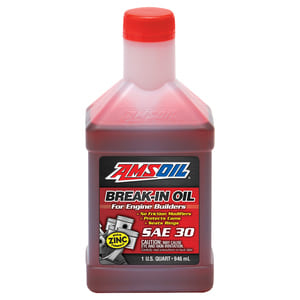
AMSOIL Break-In Oil is a must-have for anyone working with freshly rebuilt Mopar engines. This specialized oil is expertly formulated with zinc and phosphorus anti-wear additives, providing essential protection to vital components during the critical break-in phase. This phase is when engine wear rates are highest, making the inclusion of these additives crucial for long-term performance.
One standout feature of AMSOIL Break-In Oil is its exclusion of friction modifiers. This deliberate choice allows for quick and effective piston-ring seating, a vital step in the break-in process that directly impacts the engine’s power output and overall durability. By promoting optimal seating early on, this oil sets the stage for a strong foundation that can withstand the demands of high-performance driving.
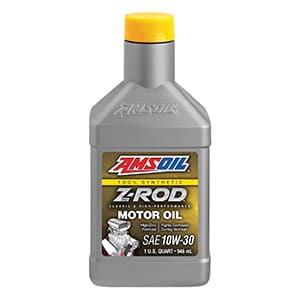
AMSOIL Z-ROD® Synthetic Motor Oil is meticulously crafted to cater to the distinctive needs of classic and high-performance vehicles, ensuring optimal functionality on the road and preserving the engine integrity even during prolonged storage periods. This specialized motor oil boasts a high-zinc formula that serves as a shield for the flat-tappet camshafts and vital components of Mopar* engines, safeguarding against wear and tear under demanding driving conditions. Moreover, it features a unique blend of rust and corrosion inhibitors that deliver enhanced protection for extended storage intervals, keeping your engine in pristine condition. Available in 10W-30, 10W-40, and 20W-50 viscosities, this product offers a tailored solution to meet the unique requirements of your prized vehicle.

AMSOIL Engine Assembly Lube plays a critical role in the construction of a top-tier engine. When Mopar* engines undergo partial assembly and remain inactive over an extended duration, the application of an engine-assembly lubricant becomes imperative. This specialized lubricant not only adheres meticulously to engine components but also offers unparalleled safeguarding against wear and tear, effectively staving off rust accumulation, and curbing the formation of detrimental deposits. AMSOIL Engine Assembly Lube masterfully caters to these crucial needs with unparalleled efficiency, ensuring that every facet of the engine-building process is meticulously attended to for optimal performance.
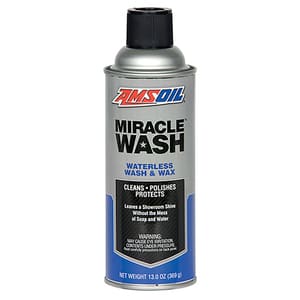
The AMSOIL Miracle Wash® Waterless Wash and Wax Spray isn’t just your run-of-the-mill car cleaning product. It’s a must-have for Mopar* muscle car fanatics who want their prized possessions to look as good as they perform. Forget about spending hours washing your car – with this spray, all it takes is a quick spray and wipe to banish dirt in an instant. This high-quality product not only leaves your vehicle sparkling clean but also gives it a lustrous shine that shields against pesky dust, light grime, and those harmful UV rays. So, if you’re serious about keeping your ride looking top-notch without sacrificing performance, this is the product for you.
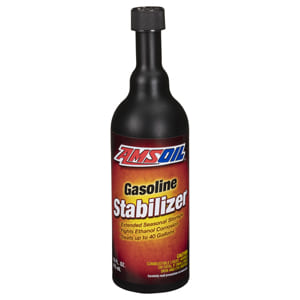
When getting your Mopar* vehicle ready for storage during the winter months, it’s crucial to incorporate AMSOIL Gasoline Stabilizer into your routine maintenance. Gasoline can degrade surprisingly fast, with the potential to deteriorate in as little as 30 days. To uphold the quality of your fuel and ensure optimal engine performance when you bring your vehicle back to life in the spring, it’s highly advisable to proactively treat your fuel tank with this stabilizer before stowing your ride for an extended hiatus.
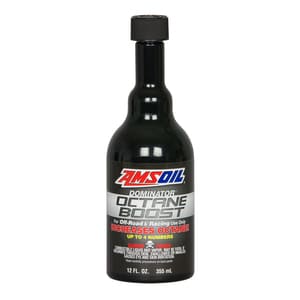
AMSOIL DOMINATOR® Octane Boost isn’t just any old fuel additive; it’s like a secret weapon for those vintage beauties that used to thirst for leaded gasoline. Imagine those classic Mopar* muscle cars revving up with a little boost of this magic potion – suddenly, they’re back in action, roaring down the road with the power they were born to have. By giving that octane a nudge of up to four points, this stuff turns engine knock into a distant memory, makes ignition a breeze, and ensures that every drop of fuel burns cleaner than ever before. It’s like giving those old-school engines a new lease on life, all thanks to a simple bottle of octane boost.

When it’s time to tuck away your prized possession for a bit, your engine deserves some love too. Before you bid your hot rod or classic Mopar muscle car a temporary adieu, don’t forget to pamper its heart with a generous serving of Engine Fogging Oil. This special oil injection into the cylinders is like a protective shield, shielding them from the sneaky rust and corrosion that like to party when the engine is sitting idle. So, when the moment comes to reignite the beast after its beauty sleep, you can do so knowing that those cylinders are ready to roar to life without any nasty surprises.
Turn Every Red Light into a Starting Line

In the vibrant narrative of American muscle, especially the Mopar* muscle car, each red light presents not a stop, but an exhilarating beginning. Bursting through the 1960s with an engine war that peaked with the likes of the iconic Charger* and Challenger*, these cars were not just built; they were engineered for excitement. They taught us that the true spirit of driving isn’t found in following the rules—it’s about rewriting them with every thunderous roar of the engine.

*All trademarked names and images are the property of their respective owners and may be registered marks in some countries. No affiliation or endorsement claim, express or implied, is made by their use.
